10 Best Herbal Teas For Fungal Infection
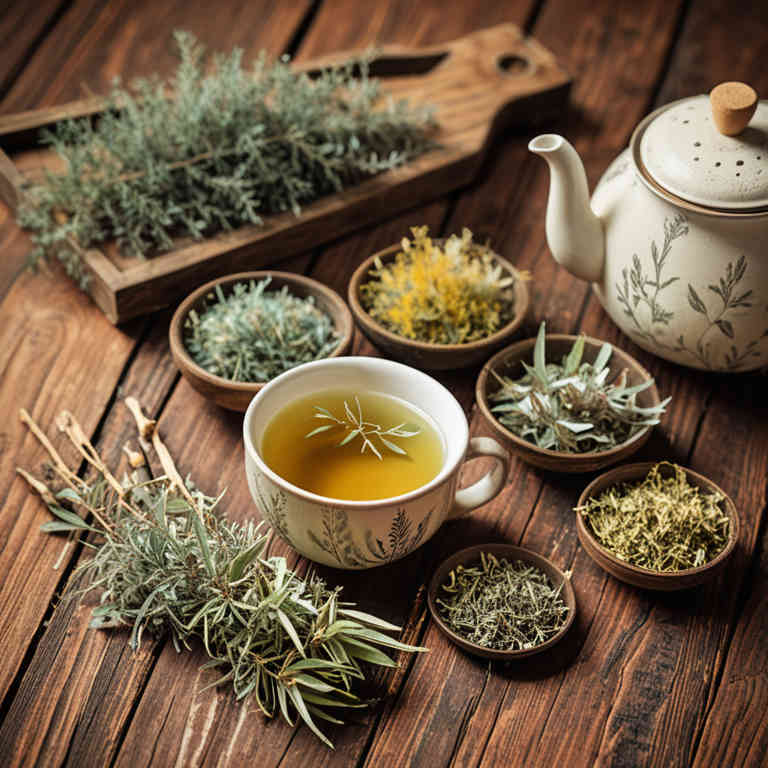
Herbal teas have been traditionally used to help manage fungal infections due to their natural antifungal properties.
Certain herbs like garlic, echinacea, and goldenseal are known for their ability to combat fungi and support the immune system. These teas can be a complementary approach to conventional treatments, offering a gentler and more holistic option for some individuals. However, it is important to consult a healthcare professional before using herbal teas, as they may interact with medications or not be effective for severe infections.
Overall, herbal teas can be a beneficial addition to a treatment plan when used appropriately and under medical guidance.
FREE Herb Drying Checklist
How to make sure every batch retains maximum flavor, color, and aroma without the risk of mold or over-drying. Eliminate guesswork and trial-and-error, making herb drying faster, easier, and more efficient every time.
Table of Contents
1. Hypericum perforatum

Hypericum perforatum, commonly known as St. John's Wort, is a herbal remedy that has been traditionally used for its potential anti-fungal properties.
While it is well-known for its antidepressant effects, recent studies suggest that the plant contains compounds such as hypericin and hyperforin, which may inhibit the growth of certain fungi. Herbal teas made from Hypericum perforatum can be prepared by steeping dried leaves and flowers in hot water, allowing the active compounds to be absorbed into the liquid. Some research indicates that St. John's Wort may be effective against Candida and other fungal infections, though more clinical trials are needed to confirm its efficacy.
It is important to consult with a healthcare professional before using St. John's Wort, as it can interact with various medications and may not be suitable for everyone.
2. Cinnamomum verum

Cinnamomum verum, commonly known as true cinnamon, has been traditionally used in herbal teas to support the body's natural defenses against fungal infections.
The essential oils in cinnamon, particularly cinnamaldehyde, possess antifungal properties that can inhibit the growth of various fungal species. When brewed into a tea, cinnamon can help reduce inflammation and soothe symptoms associated with fungal infections such as athlete's foot or yeast infections. However, it is important to note that while cinnamon tea may offer supportive benefits, it should not replace conventional antifungal treatments recommended by healthcare professionals.
Combining cinnamon tea with a healthy lifestyle and proper medical care can enhance overall effectiveness in managing fungal infections.
3. Urtica dioica
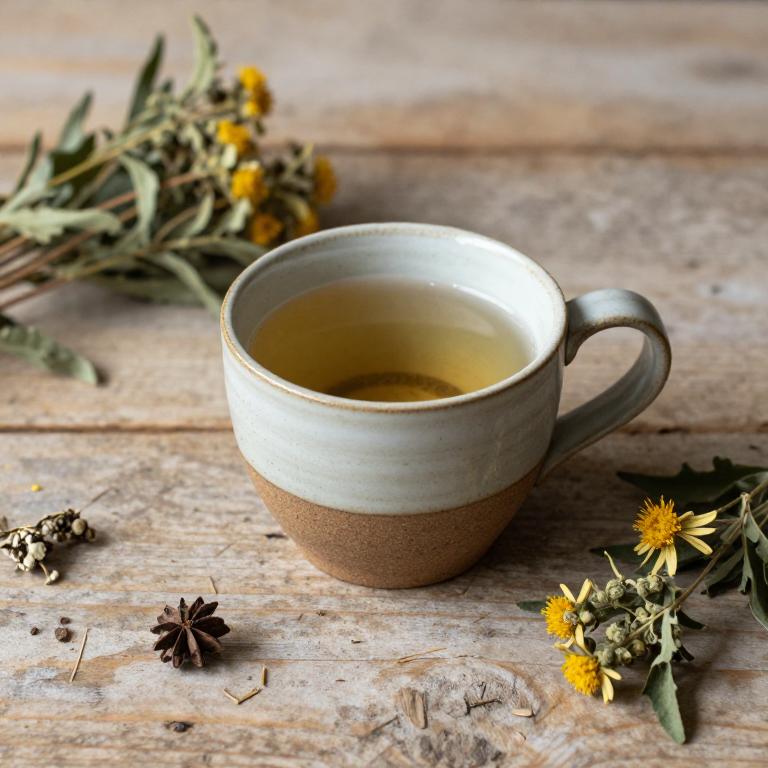
Urtica dioica, commonly known as stinging nettle, is a herbal remedy that has been traditionally used for its anti-inflammatory and antimicrobial properties.
When brewed into a tea, it may support the body’s natural defenses against fungal infections by enhancing immune function and reducing inflammation. Some studies suggest that compounds in stinging nettle, such as flavonoids and polysaccharides, may inhibit the growth of certain fungi. However, while anecdotal evidence supports its use, more scientific research is needed to confirm its efficacy for specific fungal infections.
It is important to consult a healthcare professional before using urtica dioica tea as a treatment, especially for persistent or severe fungal infections.
4. Aloe barbadensis
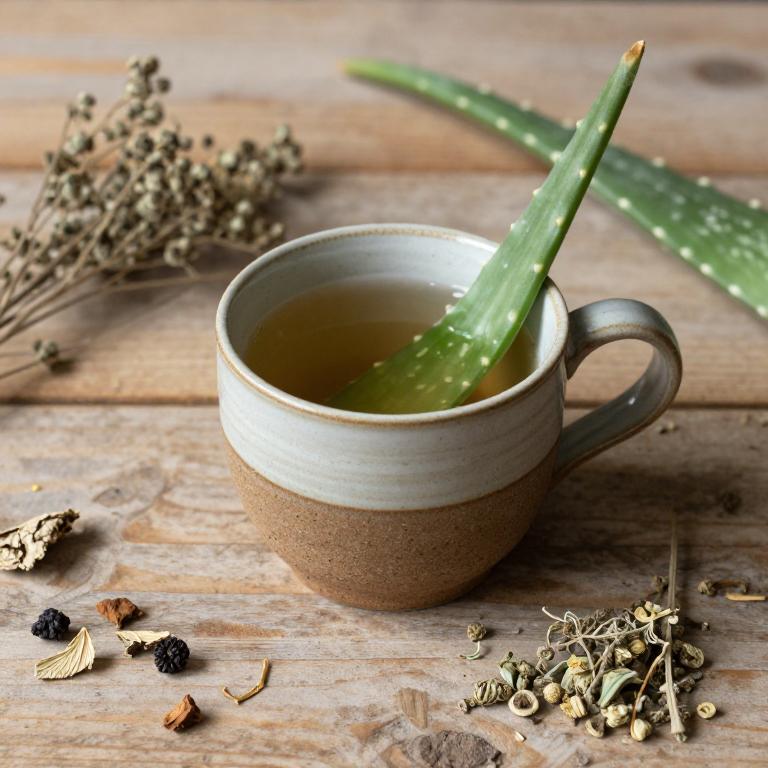
Aloe barbadensis, commonly known as aloe vera, has been traditionally used in herbal teas to support the body's natural defenses against fungal infections.
The gel extracted from the aloe plant contains compounds such as polysaccharides and antioxidants that may help enhance immune function and reduce inflammation, which are crucial in fighting fungal growth. While there is limited scientific evidence directly linking aloe vera tea to the treatment of fungal infections, some studies suggest that its antimicrobial properties could inhibit the growth of certain fungi. Herbal teas made from aloe vera are often consumed internally to promote gut health, which in turn can support the body's ability to combat infections.
However, it is important to consult a healthcare professional before using aloe vera tea as a treatment for fungal infections, as it may interact with other medications or have side effects in some individuals.
5. Ginkgo biloba
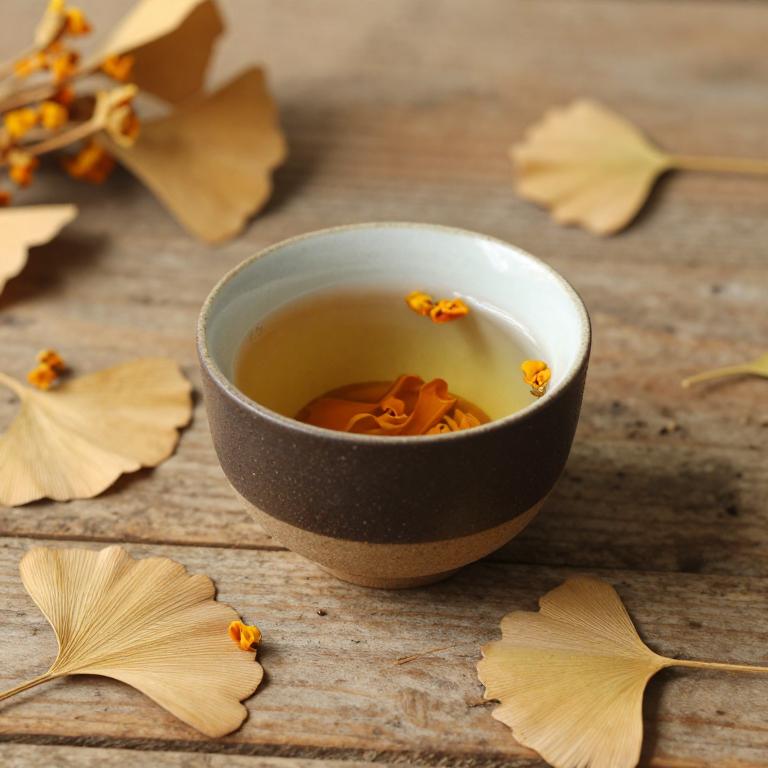
Ginkgo biloba herbal tea is derived from the leaves of the ginkgo tree, a plant known for its rich content of flavonoids and terpene lactones, which are believed to have antimicrobial properties.
While not a primary treatment for fungal infections, some studies suggest that the compounds in ginkgo biloba may help reduce oxidative stress and support the immune system, potentially aiding in the body's fight against fungal pathogens. However, it is important to note that there is limited scientific evidence directly linking ginkgo biloba tea to the eradication of specific fungal infections. As a complementary therapy, it may be used alongside conventional antifungal treatments under the guidance of a healthcare professional.
Always consult a doctor before using ginkgo biloba, especially if you are taking other medications, as it can interact with certain drugs.
6. Thymus vulgaris
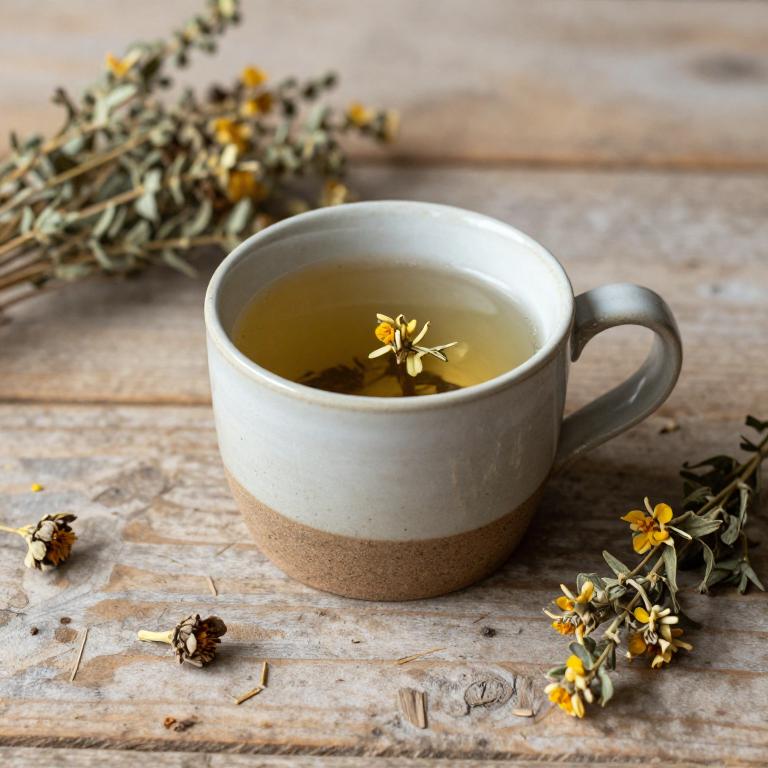
Thymus vulgaris, commonly known as thyme, is a popular herb used in herbal teas to support the body's natural defenses against fungal infections.
The essential oils in thyme, particularly thymol and carvacrol, exhibit potent antifungal properties that can inhibit the growth of various fungi, including Candida species. When brewed into a tea, thyme can help reduce symptoms of fungal infections by promoting a healthier immune response and reducing inflammation. While thyme tea is generally considered safe for most people, it is advisable to consult a healthcare professional before using it as a treatment, especially for persistent or severe infections.
Incorporating thyme into a holistic approach that includes proper hygiene and dietary habits can enhance its effectiveness in managing fungal infections.
7. Rosmarinus officinalis

Rosmarinus officinalis, commonly known as rosemary, is a herbal plant widely used in the preparation of herbal teas for its potential antifungal properties.
The essential oils found in rosemary, particularly cineole and camphor, have been studied for their ability to inhibit the growth of various fungi, including Candida and dermatophytes. When brewed into a tea, rosemary can help support the body's natural defenses against fungal infections by reducing inflammation and promoting overall immune function. However, it is important to note that while rosemary tea may offer complementary benefits, it should not replace prescribed antifungal treatments.
Individuals considering using rosemary tea for fungal infections should consult with a healthcare professional to ensure safe and effective treatment.
8. Curcuma longa
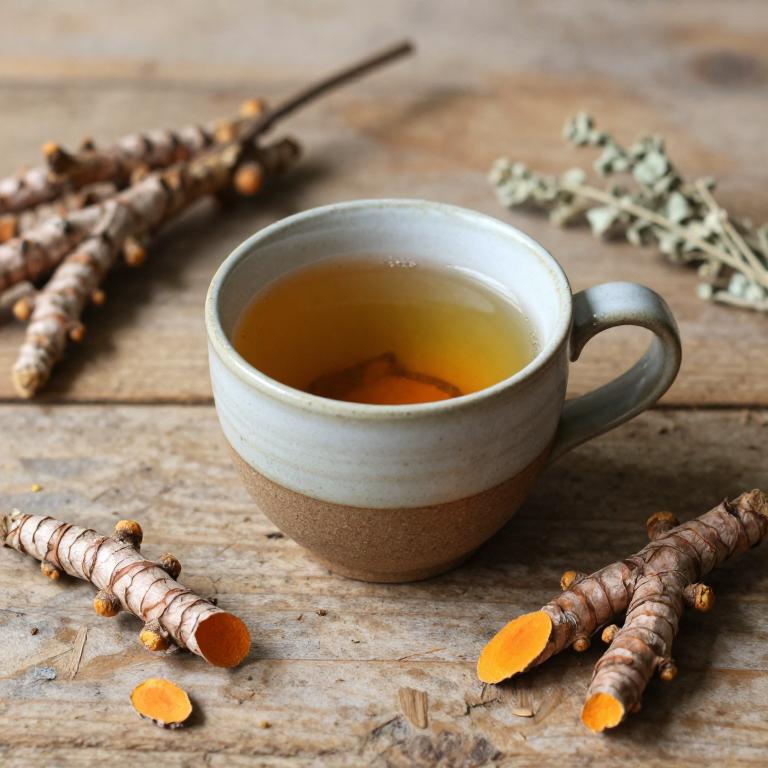
Curcuma longa, commonly known as turmeric, is widely used in herbal teas for its potential antifungal properties.
The active compound in turmeric, curcumin, has been studied for its ability to inhibit the growth of various fungal species, including Candida and Aspergillus. When brewed into a tea, curcuma longa may help support the body's natural defenses against fungal infections by reducing inflammation and promoting detoxification. However, it is important to note that while turmeric tea may offer some supportive benefits, it should not replace conventional antifungal treatments without consulting a healthcare professional.
Combining turmeric tea with a balanced diet and good hygiene can enhance its effectiveness in managing mild fungal infections.
9. Equisetum arvense
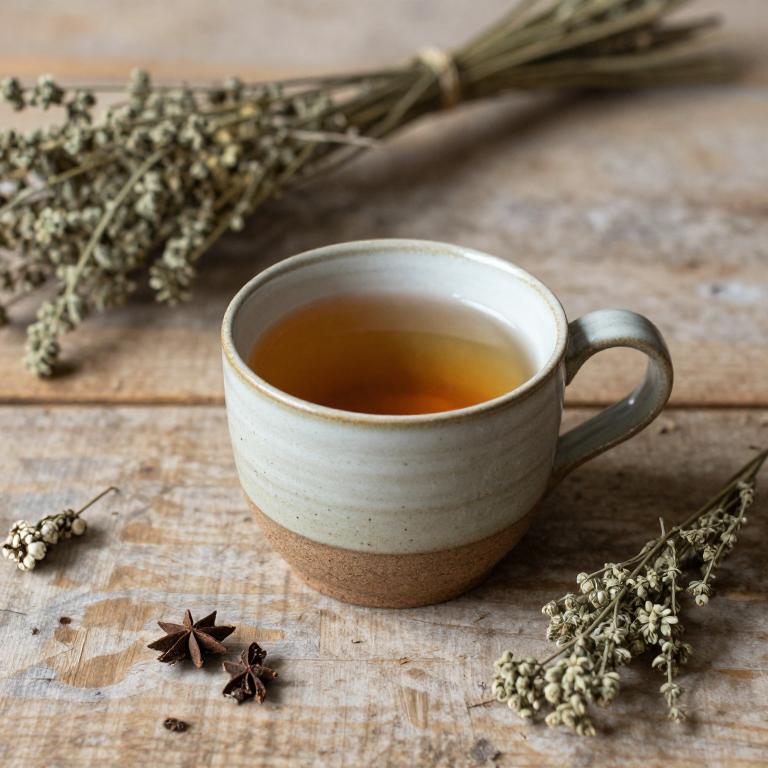
Equisetum arvense, commonly known as field horsetail, is a traditional herbal remedy that has been used for centuries to address various health issues, including fungal infections.
This plant is rich in silica and possesses natural antifungal properties, making it a valuable ingredient in herbal teas designed to combat fungal infections such as athlete's foot and candida. When brewed into a tea, equisetum arvense can help strengthen the body's defenses against fungal pathogens due to its high concentration of bioactive compounds. However, it is important to use this herb with caution, as it may have diuretic effects and should be consumed in moderation.
As with any herbal remedy, it is advisable to consult a healthcare professional before incorporating equisetum arvense into a treatment regimen for fungal infections.
10. Echinacea purpurea
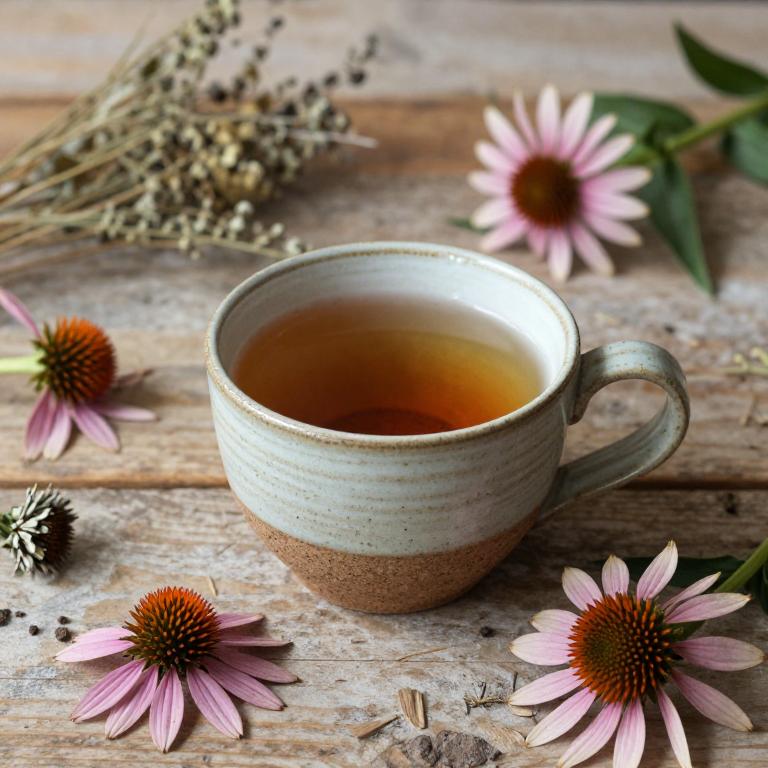
Echinacea purpurea, commonly known as purple coneflower, is a popular herbal remedy often used in teas to support immune function and combat infections.
While it is primarily recognized for its potential to alleviate symptoms of the common cold and boost the immune system, some studies suggest that echinacea may have antifungal properties that could help in managing fungal infections. The active compounds in echinacea, such as alkamides, caffeic acid derivatives, and polysaccharides, are believed to contribute to its antimicrobial effects. However, it is important to note that while echinacea tea may offer some supportive benefits, it should not replace conventional antifungal treatments prescribed by healthcare professionals.
Always consult a healthcare provider before using echinacea for fungal infections, especially if you have a compromised immune system or are taking other medications.